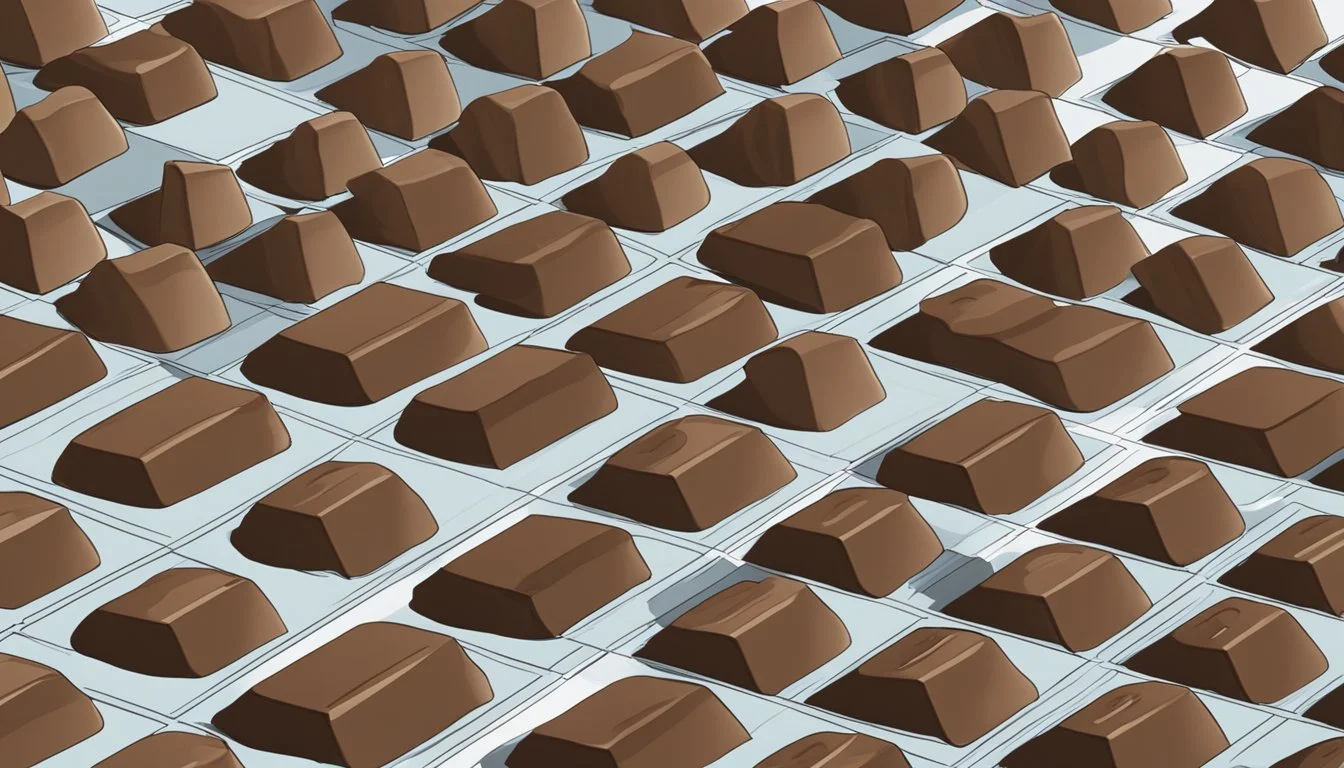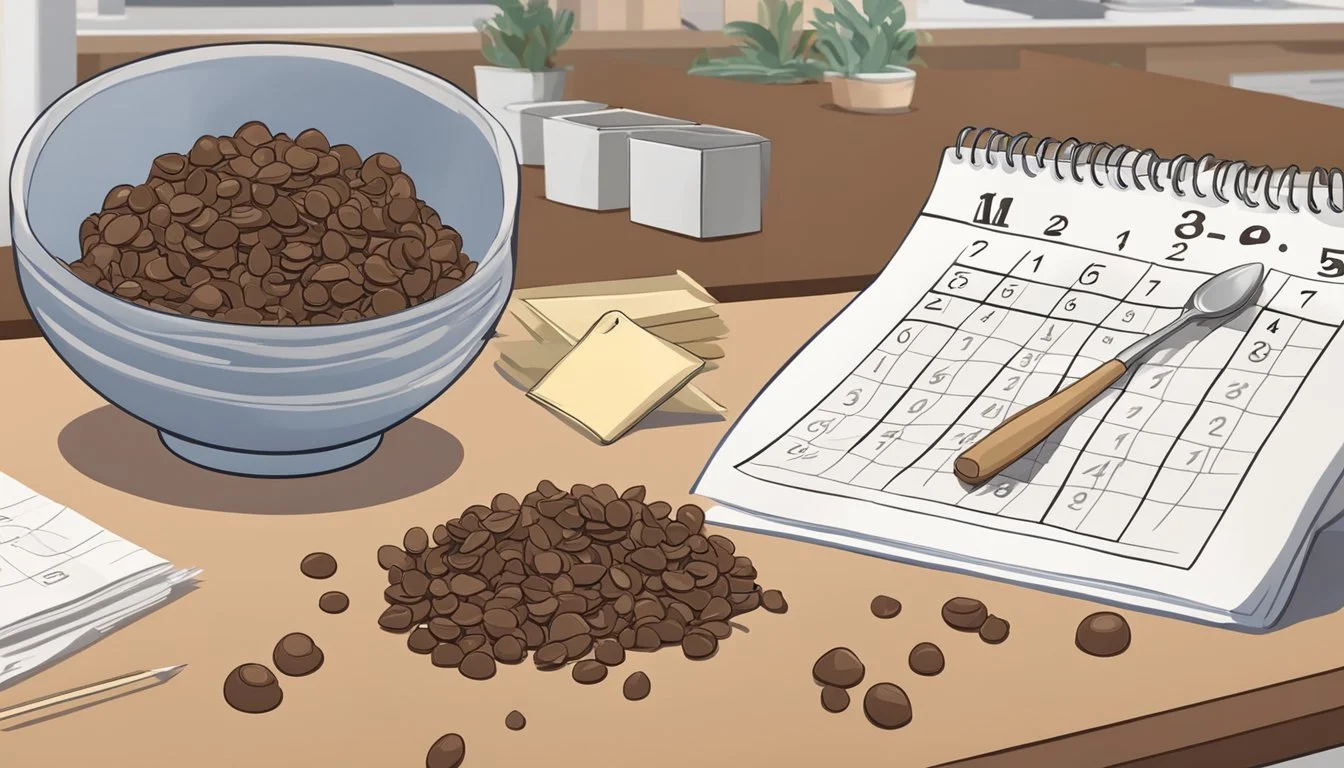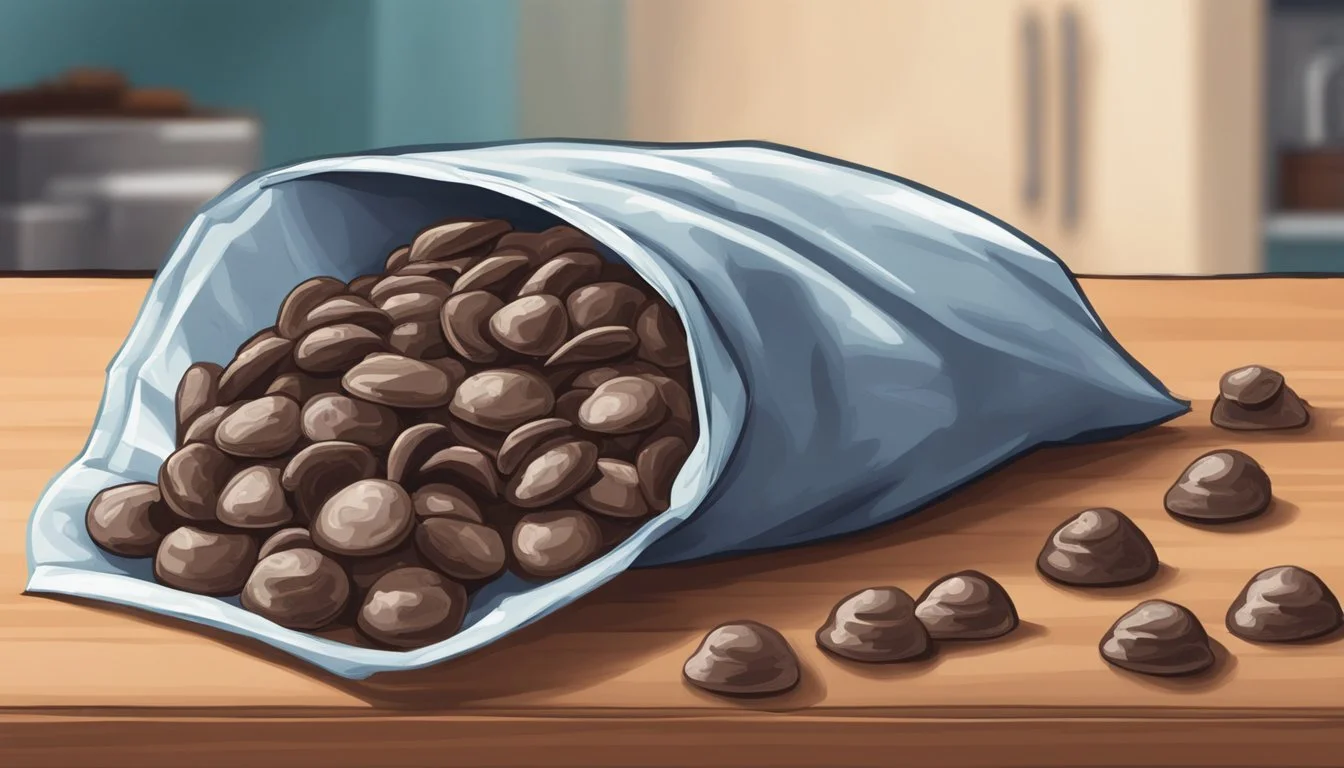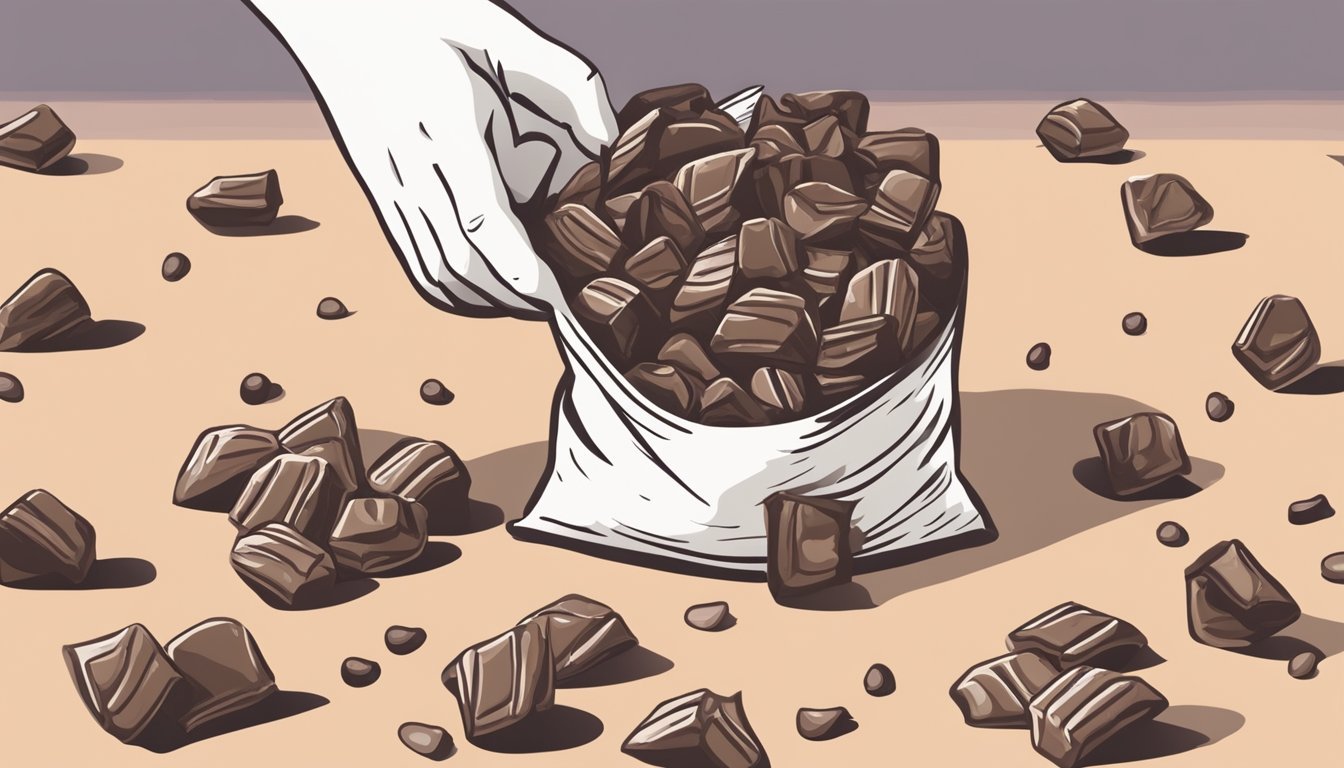How Long Do Chocolate Chips Last?
Shelf Life and Storage Tips
Chocolate chips (how long do chocolate chips last?) are a staple ingredient for bakers and sweet-toothed snackers alike, and understanding their shelf life is key to maintaining the quality of your creations and treats. Typically, the longevity of chocolate (What wine goes well with chocolate?) chips depends on the type of chocolate they are made from. Dark chocolate chips, renowned for their robustness, can remain in good condition for at least three years if stored correctly in a cool, dry place. Conversely, milk, white, and ruby chocolate chips usually have a slightly shorter shelf life, averaging around two years before quality begins to decline.
The quality of chocolate chips is paramount for both flavor and texture. While these morsels can sometimes be consumed slightly beyond the recommended timeframe, the user should be aware that after the expiration date, there is potential for the quality to degrade. Chocolate chips after this time may develop off flavors or exhibit changes in color, like a whitish appearance known as 'bloom', which results from fat or sugar (how long does sugar last?) crystals rising to the surface. Although blooming does not make the chocolate unsafe to eat, it does indicate that the chocolate is past its prime in terms of texture and taste.
Storage plays a crucial role in preserving the quality of chocolate chips. Ideally, they should be kept in an airtight container away from sources of heat, moisture, and strong odors which can all adversely affect the chocolate. For those looking to extend the shelf life, freezing chocolate chips is an option; dark chocolate chips can keep their quality for about two years when frozen, and milk chocolate varieties for around a year. Regardless of type, when stored continuously at 0° F, chocolate chips are safe to consume indefinitely, although the best quality is only ensured for a certain period after manufacturing.
Types of Chocolate Chips
Chocolate chips are small chunks of chocolate that come in various compositions and flavors, each with distinct characteristics like cocoa and milk content. The three primary types include milk chocolate chips, dark chocolate chips, and white chocolate chips (how long do white chocolate chips last?).
Milk Chocolate Chips
Milk chocolate chips contain cocoa, milk solids, sugar, and often additives like soy lecithin for stability. They are known for their creamy texture and sweet flavor, due to a higher milk content compared to dark chocolate chips.
Dark Chocolate Chips
These chips have a higher cocoa content and less milk than milk chocolate chips, which contributes to their darker color and deeper flavor. Dark chocolate chips can last for at least three years under proper storage conditions — cool and dry.
White Chocolate Chips
White chocolate chips differ significantly as they contain cocoa butter (how long does cocoa butter last?) but no cocoa solids, giving them a pale color and a rich, buttery taste. They typically comprise milk solids, sugar, and additives. They might spoil faster than darker varieties if they contain more perishable dairy products.
Determining Quality and Freshness
To ensure the quality and freshness of chocolate chips, one can look for signs of deterioration. These indicators include changes in appearance, texture, and smell which signal potential spoilage or that the chocolate chips are past their prime.
Fat and Sugar Bloom
The appearance of a white or gray film on chocolate chips, known as fat bloom or sugar bloom, indicates that the fats or sugars have separated due to changes in temperature or humidity. While bloom affects the chocolate's appearance, it doesn't necessarily mean the product is inedible. However, it can be indicative of suboptimal storage conditions and may suggest a compromise in texture and taste.
Grainy Texture and Discoloration
If chocolate chips exhibit a grainy texture or discoloration, it suggests that they have experienced some form of degradation. Ideally, chocolate chips should have a uniform color and a smooth, velvety texture. Any granularity suggests that the cocoa butter may have started to crystallize, which can occur when chocolate is repeatedly exposed to varying temperatures.
Off-Putting Odor and Taste
Quality chocolate chips should have a rich, chocolaty aroma. An off-putting odor is a clear sign of spoilage, potentially from the fats becoming rancid. Should the chocolate chips have a rancid taste or smell unpleasant, they should not be consumed as this is indicative of a compromise in freshness and quality.
Shelf Life and Expiration
Understanding the shelf life of chocolate chips and recognizing the signs of spoilage are essential for ensuring their quality and safety. This section provides a focused look at expiration dates, signs of spoilage, and consumption safety.
Expiration Date Identification
Chocolate chips typically come with an expiration date that should guide consumption. For dark chocolate chips, one can expect a shelf life of approximately three years if stored in a cool, dry environment. Milk, ruby, and white chocolate chips typically have a shorter shelf life, around two years. For the best quality, consumers should refer to the 'use by' date printed on the packaging.
Signs of Spoilage
Chocolate chips may exhibit signs of spoilage that include:
A sour or rancid smell
Mold growth
Changes in texture, such as hardening or becoming gritty
Whitish spots or coating, known as chocolate bloom, which indicates tempering issues but is not a sign of spoilage
While bloom is not harmful, any other signs such as mold or a bad smell indicate that the chocolate chips are spoiled and should not be used.
Consumption Safety Post-Expiration
If chocolate chips are slightly past their expiration date, they may still be safe to eat given there are no signs of spoilage. Unopened and properly stored bags may extend their shelf life further. However, for safety, it is crucial to inspect chocolate chips for:
Odor
Appearance
Texture
If there are no abnormal changes, the chocolate chips can potentially be consumed. Nonetheless, if there is any uncertainty regarding the quality, it is safer to err on the side of caution and avoid consumption.
Proper Storage Techniques
Effective storage techniques are essential for preserving the quality and extending the shelf life of chocolate chips. They should be shielded from elements that can accelerate spoilage, such as heat, light, and moisture. Now, let’s look at specific storage methods.
Room Temperature Storage
Chocolate chips fare best when stored at room temperature between 60-70°F (15-21°C). This range ensures that the chocolate remains solid and maintains its taste and texture. The location should be away from direct sunlight and any heat sources. It's imperative to store them in airtight containers to prevent exposure to air and humidity, which can degrade the chocolate's quality.
Temperature: 60-70°F (15-21°C)
Container: Airtight
Refrigeration
Refrigerating chocolate chips is an option if the room temperature exceeds the ideal range or if there's high humidity. To refrigerate, place chocolate chips in a sealed container to avoid the absorption of other food odors and to minimize temperature fluctuations which can cause condensation. However, condensation can lead to sugar bloom, where sugar crystallizes on the surface, altering texture.
Location: Refrigerator
Needed: Sealed, airtight containers
Risk: Sugar bloom from condensation and humidity
Freezing Chocolate Chips
Freezing can extend the shelf life beyond storage in a pantry or refrigerator. For those wondering, can you freeze chocolate chips? Yes, one can. It's crucial to use freezer-safe airtight containers or bags to protect against freezer burn and moisture. When using chocolate chips from the freezer, allow them to reach room temperature while still sealed to prevent condensation.
Container: Freezer-safe airtight
Process: Thaw at room temperature, sealed
Advantage: Extends shelf life significantly
Each storage method requires vigilant protection against temperature changes and high humidity to maintain the integrity of the chocolate chips.
Factors Affecting Longevity
The stability and quality of chocolate chips over time are influenced by several key environmental conditions and innate product characteristics. Understanding these factors is critical in preserving the integrity and flavor of chocolate chips.
Environmental Factors
Temperature and Humidity: Chocolate chips store best under cool, dry conditions. They should ideally be kept in an environment where the temperature is stable and below 70°F, with humidity levels remaining below 50%. High temperatures lead to melting and fat bloom—a white, waxy surface caused by the separation of fat. Excess humidity can result in sugar bloom, where sugar crystals form on the chocolate's surface due to moisture.
Direct Sunlight and Heat Sources: Exposure to direct sunlight and proximate heat sources can accelerate spoilage. This can cause not only a change in texture but also degradation of taste. Chocolate chips should be stored away from windows and not above or near appliances that generate heat.
Physical and Chemical Attributes
Cocoa Percentage and Additives: The type of chocolate chip—dark, milk, or white—significantly affects longevity. Dark chocolate chips, with a higher cocoa percentage, tend to last longer than milk or white chocolate varieties. The latter often contain more additives and fats like milk solids, which can shorten their shelf life.
Nuts and Other Inclusions: Chocolate chips with nuts (how long do nuts last?) or other inclusions may expire sooner due to the higher fat content in nuts and potential for these additions to turn rancid.
Storage Format: How chocolate chips are packaged and stored impacts their quality over time. Airtight containers prevent the intrusion of moisture and other contaminants, thereby preserving freshness and extending shelf life.
By taking these factors into account, consumers and manufacturers can ensure the longevity of chocolate chips, maintaining their desired taste and texture for as long as possible.
Usage Beyond Shelf Life
When chocolate chips surpass their shelf life, they can still play a role in cooking and baking if they've been stored correctly and show no spoilage. Subtly altered in flavor or texture, they may offer a different character to dishes than fresh chips.
Baking with Expired Chocolate Chips
Expired chocolate chips can often be used in baking recipes where their diminished sweetness or altered texture is less noticeable, particularly in items like cookies and muffins. They should be closely examined for any signs of spoilage, such as mold or an off smell before use. Considering that chocolate's key components, like cocoa powder, remain stable over time, expired chips can still contribute a rich flavor when used as a substitute for fresh chips or cocoa in baked goods.
Alternative Uses for Older Chocolate Chips
If expired chocolate chips are deemed unsuitable for their traditional role in sweet dishes, they can find a place in savory dishes as well. Their residual sweetness and chocolate essence can enhance mole sauces or be added as a topping on a gourmet pizza, providing a unique twist to classic recipes. It's advisable to melt the chocolate chips and blend them thoroughly into the savory dishes to distribute the chocolate flavor evenly.
Identifying Bad Chocolate Chips
When assessing if chocolate chips have spoiled, several signs can indicate they are no longer suitable for consumption.
Visual Cues:
Mold: Any visible mold growth on chocolate chips is a clear sign they are bad.
White Spots/Film: A white or greyish coating, often referred to as 'bloom', is generally caused by sugar or fat crystallization. This doesn't necessarily mean the chocolate is unsafe to eat, but it may have a different taste and texture.
Olfactory Indicators:
Off Smell: Trust one's nose. Chocolate should have a rich, cocoa aroma. If the chocolate chips emit a musty or sour smell, they have likely gone bad.
Tactile Evidence:
Chocolate chips that have a sticky or damp feel may indicate they've been compromised by moisture, which can lead to spoilage.
Taste Test:
If the smell and appearance seem normal, but there's still doubt, one can try a small piece. If there's an unexpected or unpleasant taste, it's best to discard the chocolate chips.
Storage Related Concerns:
Improper storage can compromise the quality of chocolate chips. If chips have been stored in warm, humid conditions, or beyond the expiration date, they are more likely to spoil.
Remember, these indicators are signs that chocolate chips should no longer be used in cooking or consumption, and it's always better to err on the side of caution when the quality is questionable.







